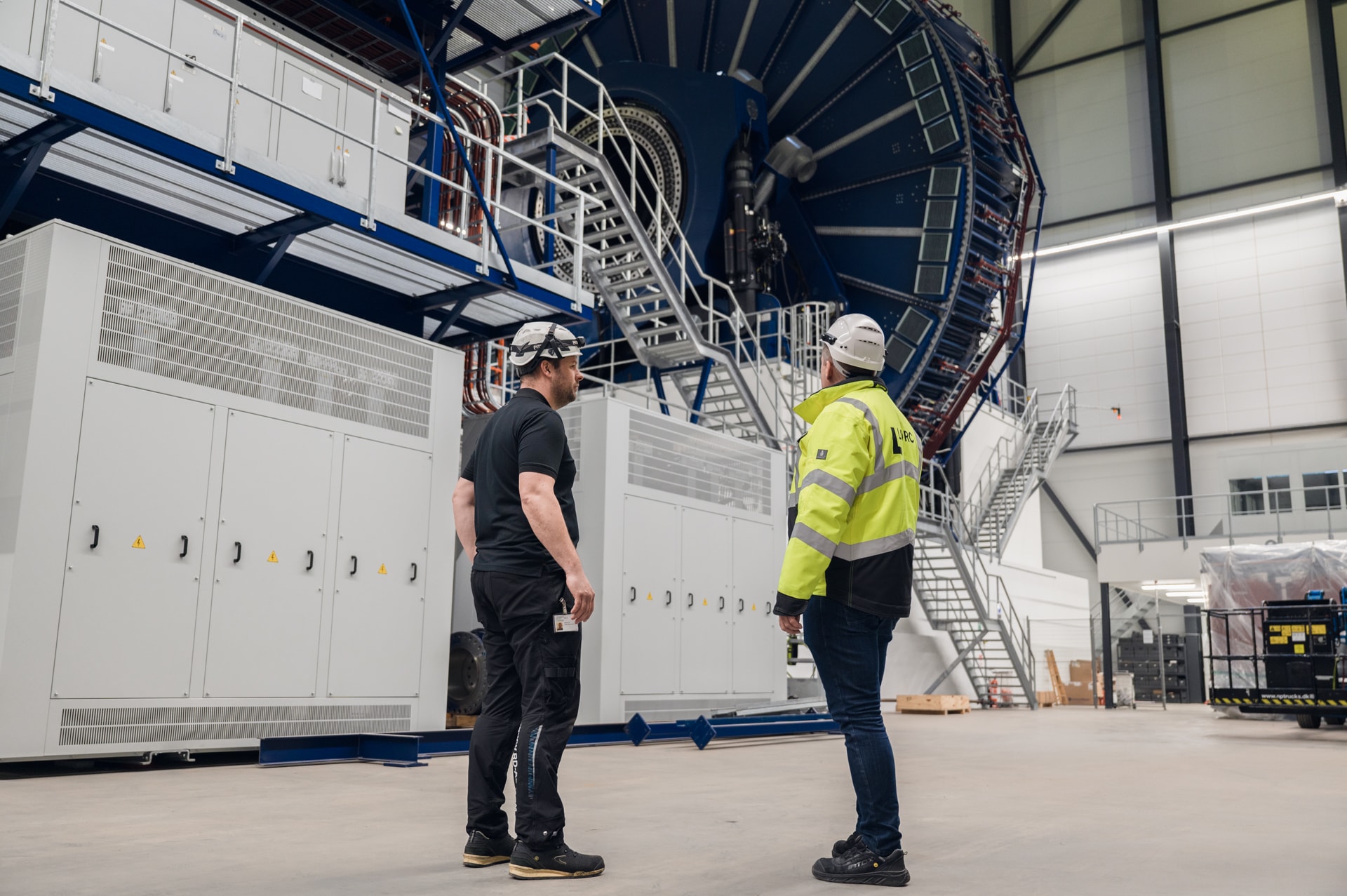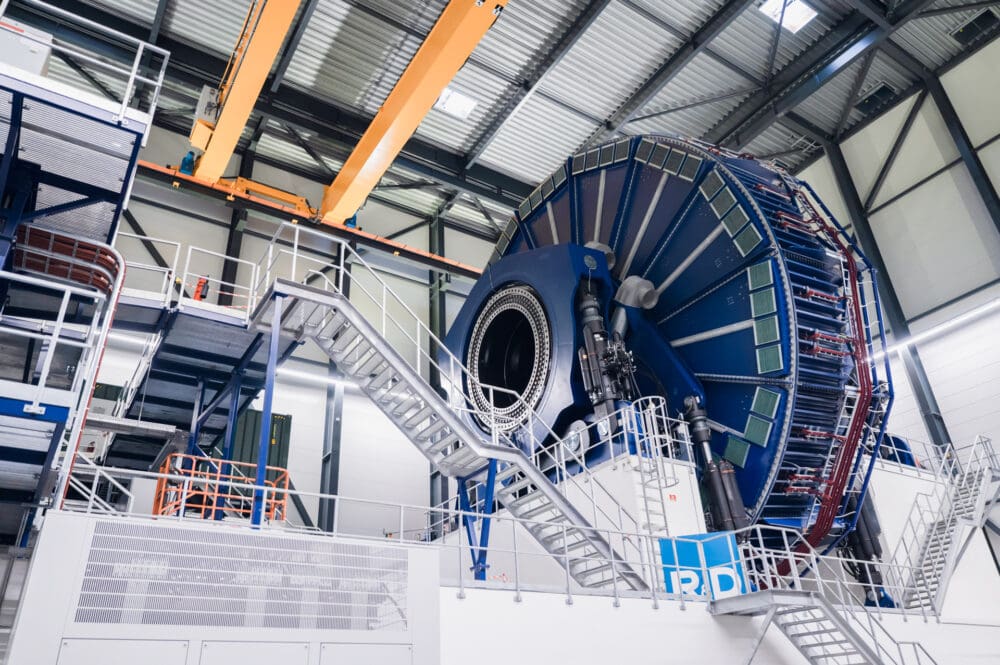
Test Systems
The world’s largest test system for wind turbines reuses 90% of its power consumption
The world’s largest test system for wind turbines reuses 90% of its power consumption
Smart power utilization is on top of the agenda of most companies, which means that it is in everyone's interest to optimize power consumption when possible - especially when it comes to large amounts of power.
A perhaps paradoxical but necessary use of electricity is for testing the large offshore wind turbines of the future. At LORC (Lindø Offshore Renewables Center), the world's largest test bench to test the next generation of offshore wind turbines is installed. The large test system, called HALT XL (highly accelerated lifetime testing), tests the wind turbine's nacelle by simulating extreme wind conditions. In this way, the test system can expose wind turbine prototypes to 20 years of weather conditions in just six to eight months.
The test bench was built by the engineering company R&D Test Systems, which considered how to minimize the power consumption of the large test system in the development of the test bench.
"It takes a lot of power to test the world's largest wind turbines. The test system is powered by 25.000 kW to drive continuously, which corresponds to the average power consumption of 50.000 households*," explains Rico Hjerm Hansen, Senior Specialist at R&D Test Systems.
It takes a lot of power to test the world's largest wind turbines. The test system is powered by 25.000 kW to drive continuously, which corresponds to the average power consumption of 50.000 households*.
Power-looping and power control
To limit power consumption, R&D Test Systems used sophisticated power-looping and power-control, which combined minimize the test bench’s consumption from 25.000 kW to just a tenth.
This is possible because the test bench simulates different wind forces that make the wind turbine rotate - and just like in the open air, the wind turbine generates power when it rotates. This is achieved by electrically closing the power loop, feeding back the power produced by the turbine to the system. In this way, the only power that needs to be added to keep the giant system running is a minor energy loss in the process.
In addition to the system having an integrated power loop, optimization of the power consumption in the system’s auxiliary systems has also been considered. Many auxiliary systems are required to make an advanced test system running 24/7 operation. All auxiliary systems, for example, lubrication, fans, water-cooling, hydraulic etc., are made to automatically adjust to only the necessary level to avoid excess consumption.
Power-loops are also used elsewhere
R&D Test Systems specializes in developing test benches for the wind industry, where the purpose is most often to test components and parts of the wind turbines to ensure that they can withstand 20 years of wear and tear on the harsh seas. Therefore, power-looping is already used in many test benches, where prototypes themselves produce power when they are tested. In this way, it is ensured that the test benches are as cost-effective as possible.
“A key design parameter is ensuring high availability – downtime is critical due to the enormous investment and to keep the development of future renewable energy technologies on track. With decades of experience and being a market leader, R&D Test Systems has made energy-optimization and availability go hand-in-hand,” concludes Rico Hjerm Hansen.
* Assuming a 4500 kWh per year for an average household

